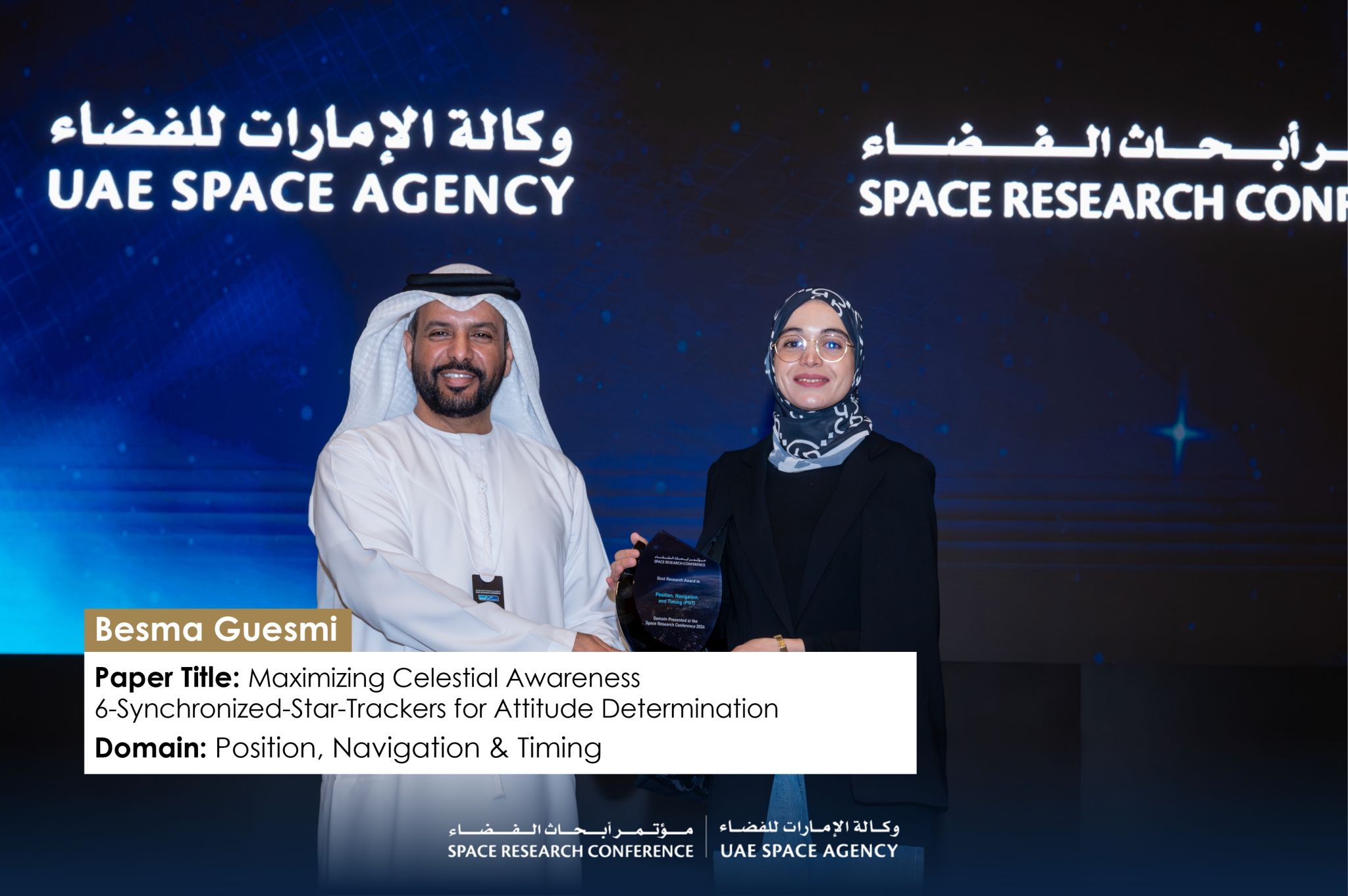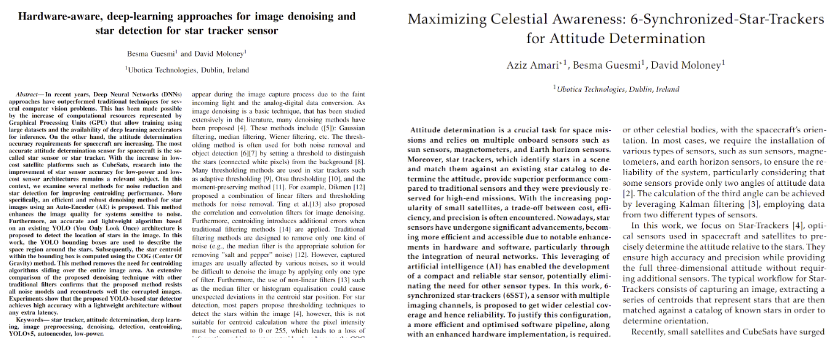Besma Guesmi, you’re a star! Our Ubotica family is thrilled beyond words about your recent Best Research Award from the UAE Space Agency. We want to extend our warmest congratulations to our star, Besma Guesmi, for receiving the Best Research Award in the Positioning, Navigation, and Timing (PNT) domain. We couldn’t be prouder of you! This outstanding achievement highlights your dedication, passion, and innovative contributions to advancing space technology. Your work inspires us all at Ubotica, and we’re truly honored to have you on our team as we celebrate this remarkable moment together.
Pioneering 6 Synchronised Star Tracker Innovation: Award-Winning Solution from AUE Space Agency
[9/10/2024, Zayed University, Abud Dhabi, Emirates] We are excited to announce that our groundbreaking advancements in star tracker sensor technology have been honored by the UAE Space Agency, awarding us in the Position, Navigation, and Timing (PNT) domain. Our breakthrough development utilises cutting-edge neural network-based denoising and star detection techniques, ensuring high-accuracy centroid calculations while meeting the demanding needs of real-time space applications. This achievement reflects our commitment to balancing precision, speed, and efficiency—a critical requirement for advanced space missions.

6 Synchronised Star Tracker (6SST) Approach
A star tracker is a precise optical sensor used in spacecraft for attitude determination by identifying star patterns and calculating the spacecraft’s orientation in space. It ensures accurate navigation by continuously comparing observed star positions with onboard star catalogs.
Traditional star trackers often rely on conventional denoising and centroiding techniques that demand significant computational resources and processing time, making them unsuitable for real-time applications in space. Ubotica overcame these challenges through our advanced design, utilising lightweight neural networks tailored for denoising and star detection. This innovation ensures more efficient processing while maintaining the high precision required for space applications.
The clean and noise-free images generated by our approach allow us to employ the Center of Gravity (COG) method for centroid calculation–a fast and efficient solution that has been vulnerable to noise. By eliminating noise through our optimised Encoder-Decoder-based architecture, Ubotica ensured that the COG method performs reliably even in demanding environments, resulting in precise centroiding for accurate star identification and attitude determination.
Moreover, to evaluate the impact of each processing step on the performance of the system, we conducted extensive analysis and experiments by measuring the pixel-shifting in the image and examining its impact on attitude accuracy. It was noticed that some pixel shifts, if not properly accounted for, can propagate errors in the centroid calculation, leading to inaccurate attitude measurements. Our experiments allowed us to define the pixel-shifting tolerance, ensuring that some processing steps would allow us to enhance the system’s capabilities without affecting the accuracy of attitude determination.
Our innovation balances high precision and low resource consumption, making it ideal for low-power satellite systems that need to operate autonomously under strict resource constraints.
Expanding Horizons: Beyond Attitude Determination
Our 6SST solution goes beyond the immediate requirements of attitude determination. We proposed a six-star tracker synchronisation method that creates six distinct star field views.
These views are pre-processed and stitched together, ensuring seamless alignment and a broader field of view. This approach not only enhances the reliability of attitude determination but also opens up new possibilities for critical space applications:
Threat Detection and Space Situational Awareness (SSA): Our system’s precision and multi-view capabilities allow it to identify and monitor debris, contributing to efforts aimed at minimising risks in Earth’s orbit.
Constellations and Satellite Formation Flying: Enhanced accuracy and synchronisation enable better coordination and alignment between multiple satellites. This is essential for constellation missions, where satellites must operate in unison to provide uninterrupted coverage, and formation flying, which requires precise relative positioning between spacecraft.
Collision Avoidance for Spacecraft: With improved situational awareness, our star tracker can help satellites and other spacecraft avoid collisions in congested orbits.

Additionally, our work on the 6 synchronised Star Tracker (6SST) for attitude determination and space awareness titled “Maximizing Celestial Awareness: 6-Synchronized-Star-Trackers for Attitude Determination” recently presented at the SPAICE Conference hosted by the European Space Agency (ESA) will also be published soon.
